Part of a series of articles titled Park Paleontology News - Vol. 14, No. 2, Fall 2022.
Article
From Sea to Shining Sea: "Fossils from Your Public Lands" at the Western Science Center

Alton Dooley, Executive Director
Western Science Center, Hemet, California
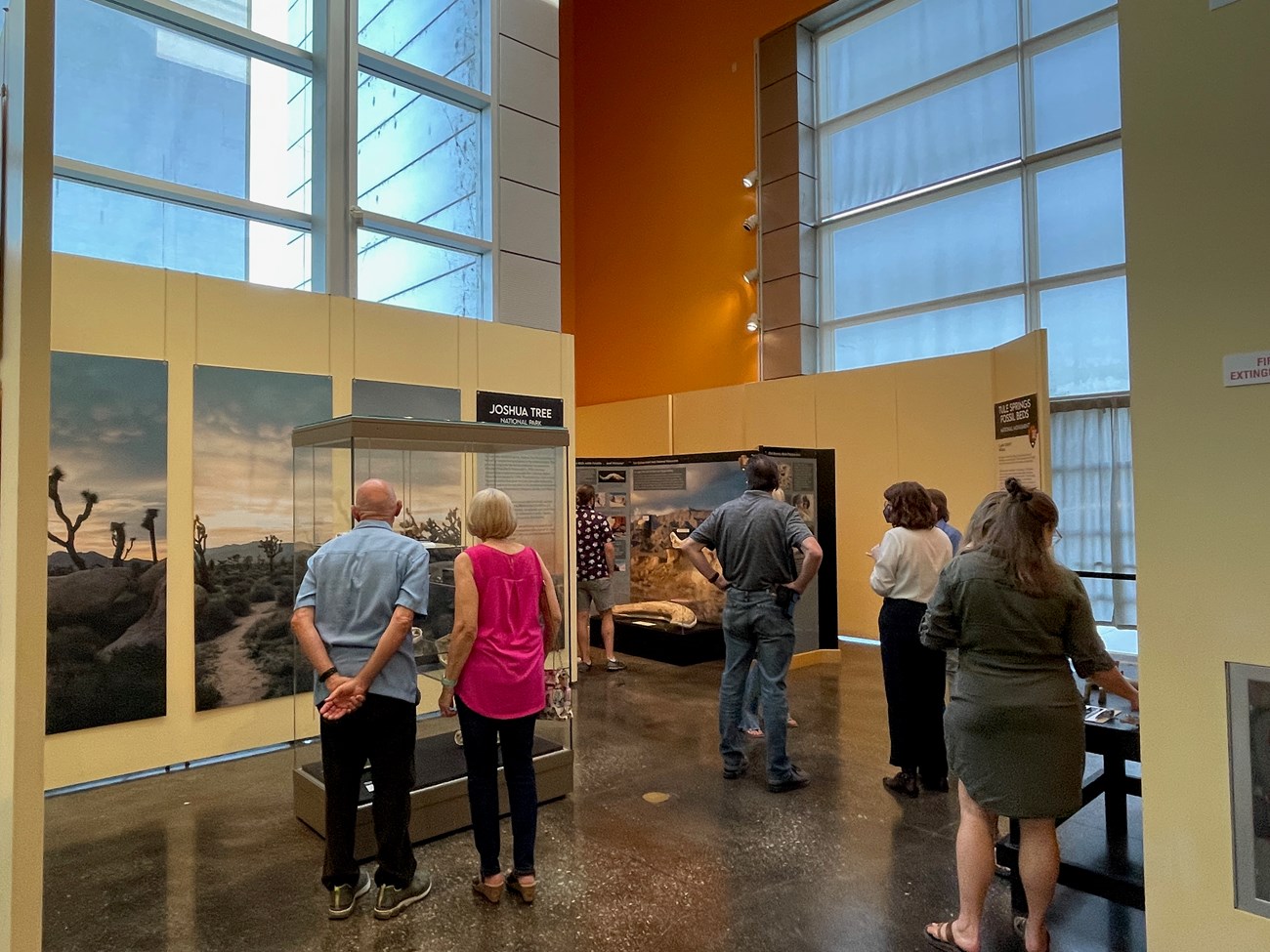
Photo by Alton Dooley/Western Science Center.
Introduction
It’s right there in the National Park Service (NPS) mission statement:
“The National Park Service preserves unimpaired the natural and cultural resources and values of the National Park System for the enjoyment, education, and inspiration of this and future generations.”
That single sentence encompasses a vast responsibility to protect a tremendous variety of ecological, cultural, and historical resources. Most NPS properties have multiple categories of resources under their care, and for many of them this includes fossil resources.
Unlike many other natural resources, fossils usually can’t be effectively preserved in place. Once exposed to the elements, after a fairly short period of time the information a fossil contains about the Earth’s past is lost forever. Following the NPS mission often requires removing fossils from their original locations, while balancing this against the impact of the park’s other resources.
Recovered fossils require a lot of specialized care and proper long-term storage facilities. This is addressed in the second sentence in the NPS mission statement:
“The Park Service cooperates with partners to extend the benefits of natural and cultural resource conservation and outdoor recreation throughout this country and the world.”
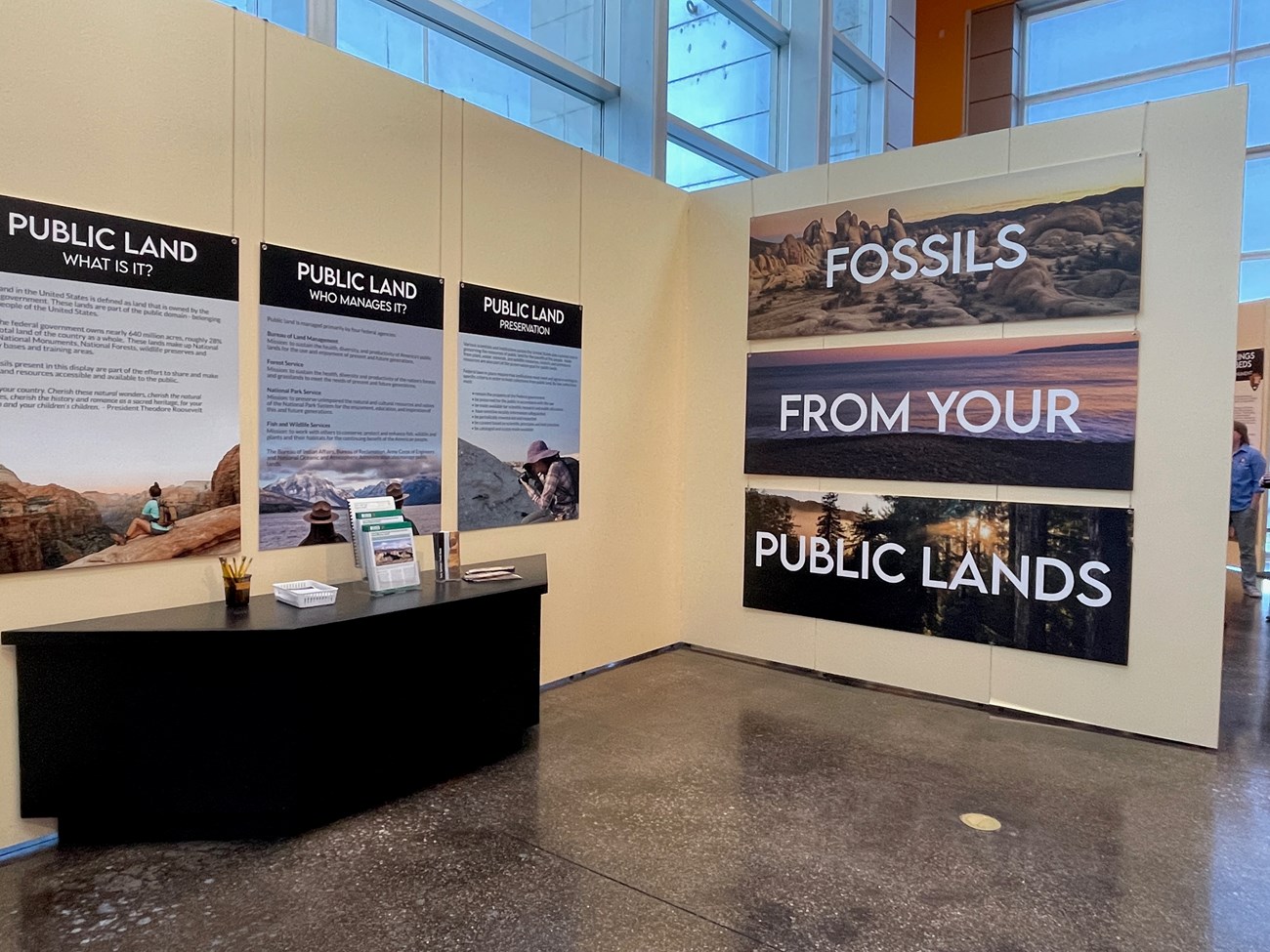
Photo by Alton Dooley/Western Science Center.
Fossil Repositories
To provide for the long-term care of fossils, and to expand their uses in research and education, the NPS partners with an array of federal, state, local, and private repositories. The Western Science Center (WSC), a natural history museum in Hemet, California (and my employer), is one of these repositories. We currently serve as the fossil repository for Joshua Tree National Park, as well as for numerous other agencies including U.S. Forest Service (USFS)—San Bernardino National Forest, and the Bureau of Land Management (BLM).
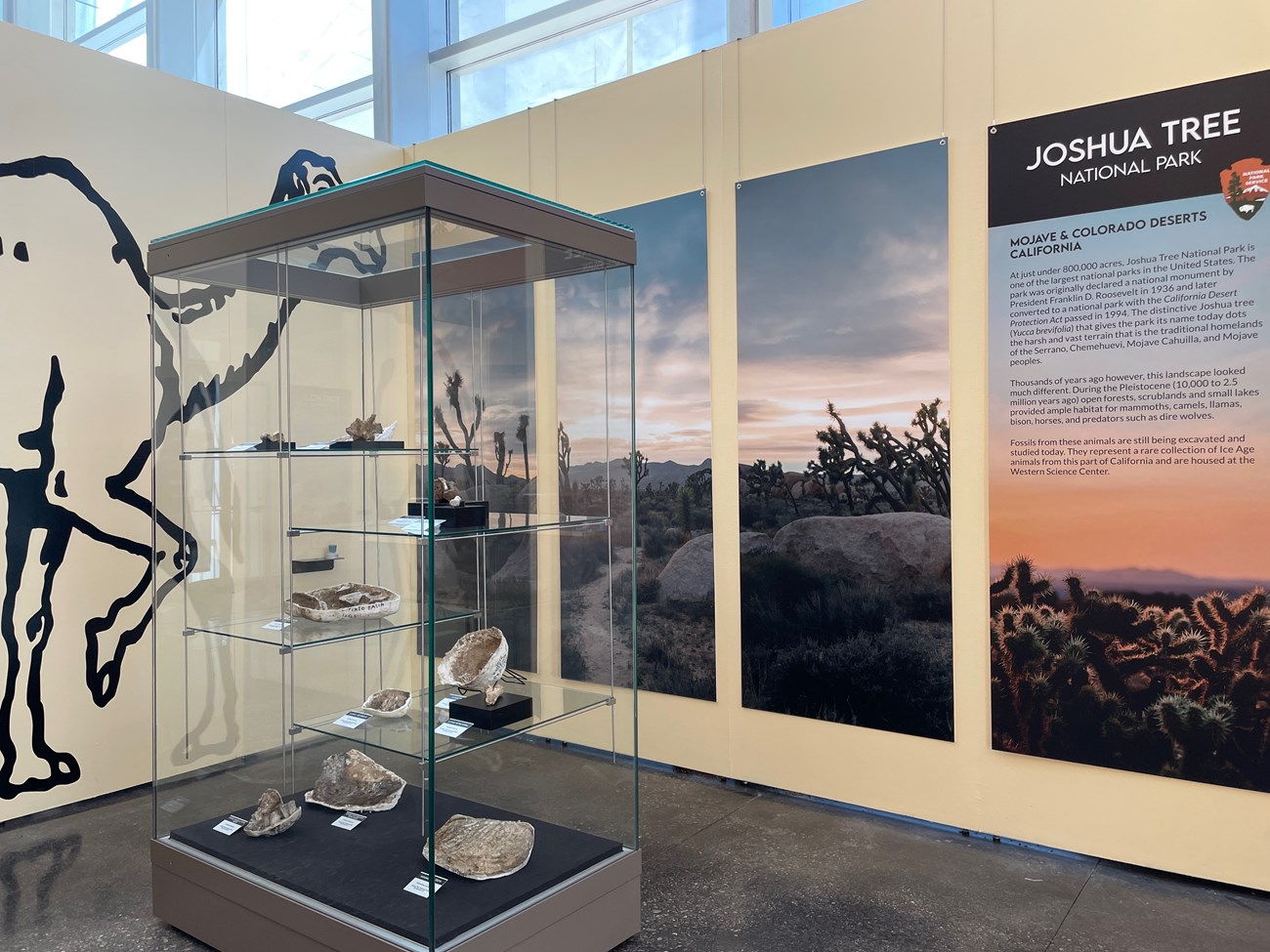
Photo by Alton Dooley/Western Science Center.
Western Science Center Exhibit
The role played by federal agencies in the protection and study of fossils is often overlooked by the general public, as is the relationship between government agencies and their repositories. “Fossils from Your Public Lands”, our new temporary exhibit at the Western Science Center, illustrates these relationships. The exhibit explores a sampling of fossil specimens from NPS, USFS, BLM, and Department of Defense properties from across the country. As mentioned, WSC houses Ice Age fossils house from Joshua Tree National Park, as well as dinosaurs from BLM sites in New Mexico and Miocene horses from San Bernardino National Forest in California. But to make the exhibit more complete, we received substantial help from other park units and repositories.
Tule Springs National Monument loaned an entire prefabricated display about the Ice Age fossils found there. Channel Islands National Park and their repository, the Santa Barbara Museum of Natural History, loaned us fossils of animals such as pygmy mammoths and island foxes that are found nowhere else in the world. John Day Fossils Beds National Monument in Oregon provided numerous casts of Eocene mammals, and also invited WSC staff to spend two days at the park creating digital 3D models of additional fossils; at WSC we’ve used those digital models to produce 3D-printed replicas for display. We used the same method to replicate Miocene mammals from Fort Polk in Louisiana, which are housed at the Louisiana State University Museum of Natural Science, and whale bones from Yorktown Naval Weapons Station in Virginia, courtesy of the Virginia Museum of Natural History. We’ve also leveraged the museum’s casting and 3D printing capabilities to make touch tables, where visitors can interact tactilely with fossils without endangering the original specimens.
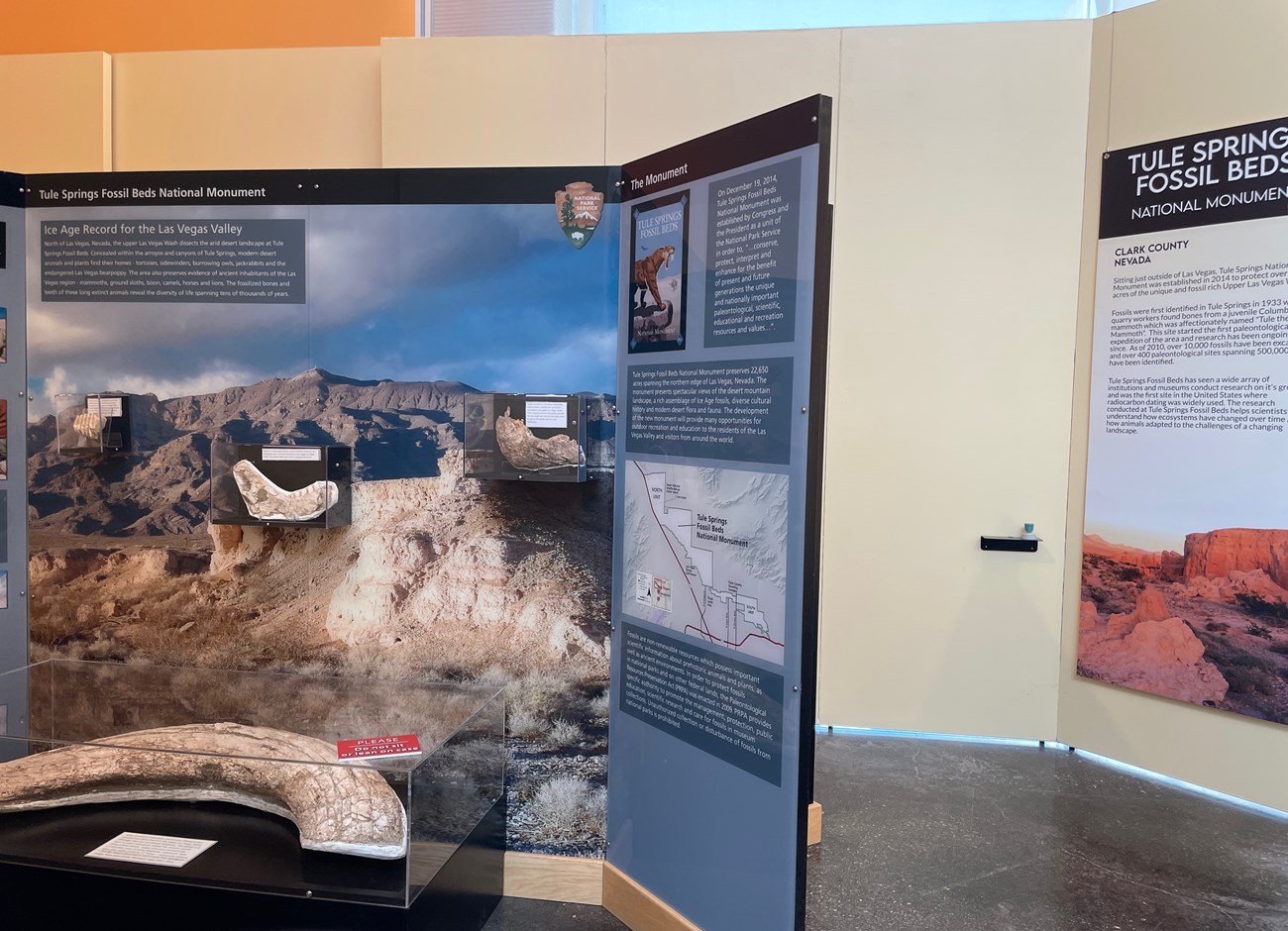
Photo by Alton Dooley/Western Science Center.
The result is a model of cooperation, using original specimens, casts, and 3D prints from eight different sites and four federal agencies across five states, and from six different repositories. While the range of fossil resources from public lands is far too great to explore in a single exhibit, these eight sites do represent an impressive range of organisms spanning 80 million years.
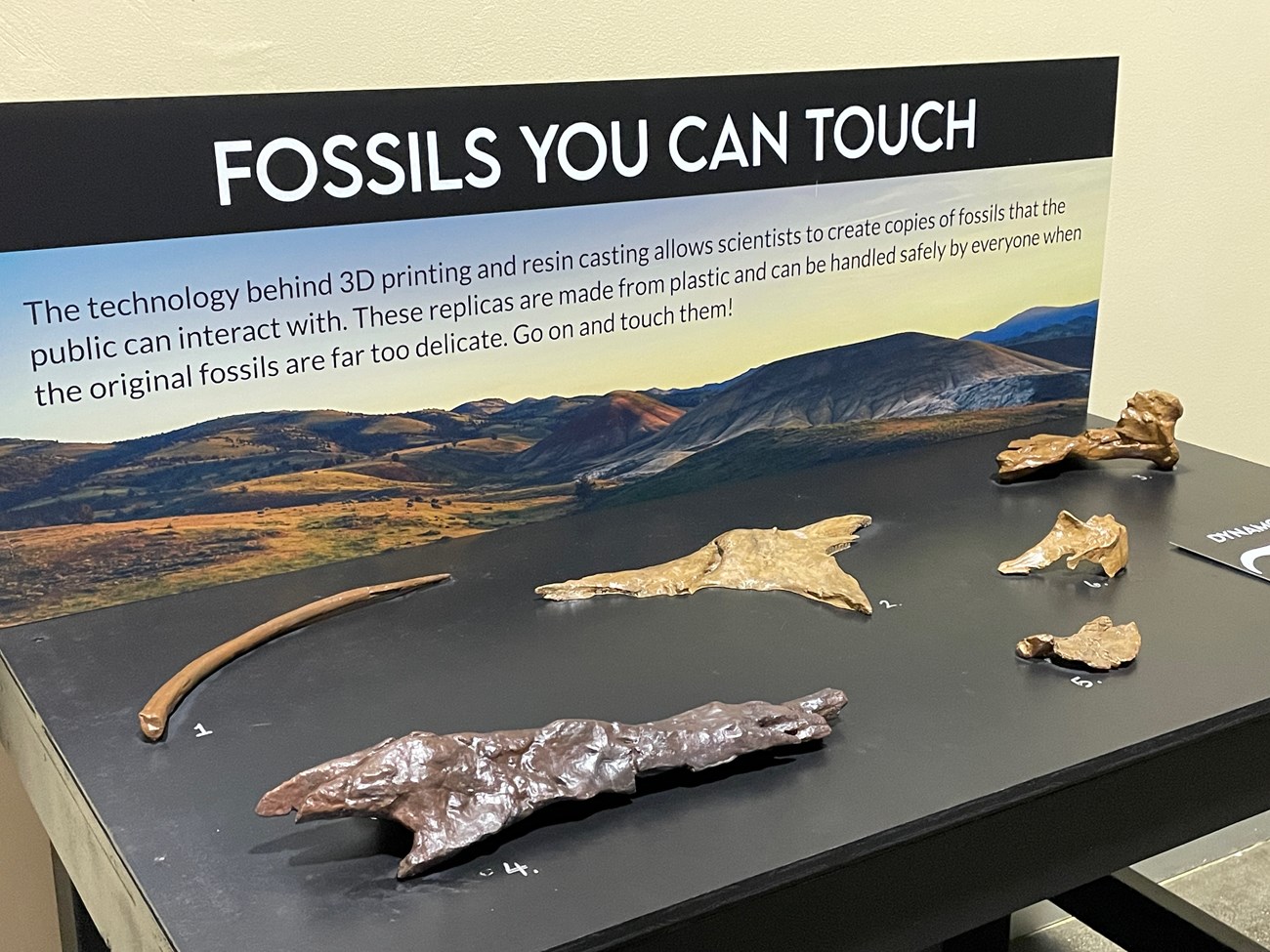
Photo by Alton Dooley/Western Science Center.
The fossils on display include bones from the tyrannosaur Dynamoterror and the “duck-billed” dinosaur Ornatops, both recently named based on specimens from BLM land. Among the specimens from John Day Fossil Beds NM are bones from the hippo-like rhinoceros Zaisanamynodon, the four-tusked ancestral mastodon Zygolophodon, and a host of other animals. While pygmy mammoths are known only from the Channel Islands, teeth from their much larger ancestor, the Columbian mammoth, are on display from Tule Springs and Joshua Tree. These two parks also have produced a menagerie of Ice Age animals, including the giant western camel Camelops, which stood over 10 feet tall and ranged across western North America. And with whale bones from the Chesapeake Bay region of Virginia and sea cow bones from Channel Islands NP, our exhibit really does reach “from sea to shining sea”.
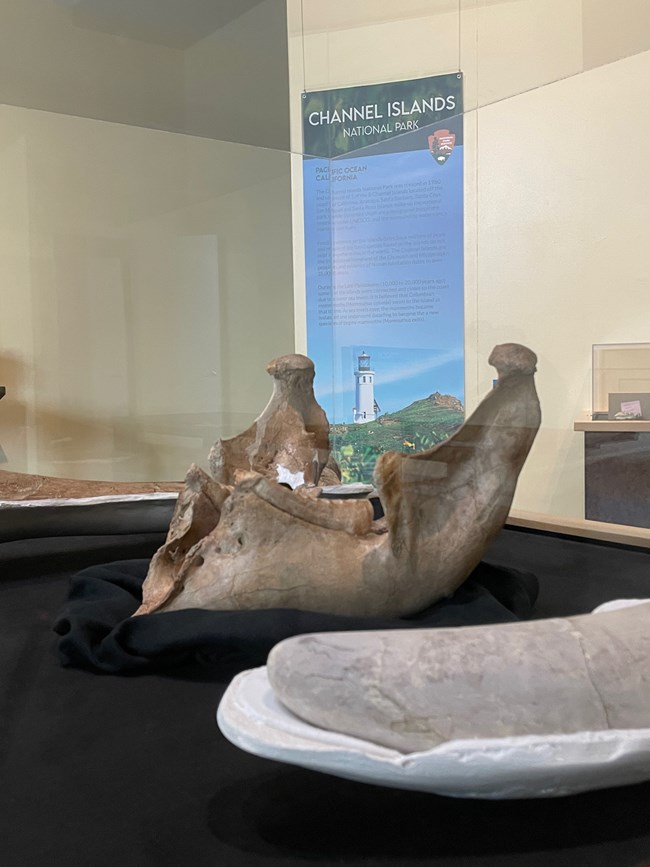
“Fossils from Your Public Lands” will be open at the Western Science Center until late Spring 2023. But remember that public lands fossils are displayed every day in park facilities and museums all over the country, so there are opportunities for everyone to learn about our nation’s amazing prehistory!
Photo (right): This jaw, from a grown pygmy mammoth, vividly illustrates how mammoths evolved to respond to the small Channel Islands ecosystem.
Photo by Alton Dooley/Western Science Center.
Related Links
-
Channel Islands National Park, California—[Geodiversity Atlas] [Park Home] [npshistory.com]
-
John Day Fossil Beds National Monument, Oregon—[Geodiversity Atlas] [Park Home] [npshistory.com]
-
Joshua Tree National Park, California—[Geodiversity Atlas] [Park Home] [npshistory.com]
-
Tule Springs National Monument, Nevada—[Geodiversity Atlas] [Park Home] [npshistory.com]
Last updated: December 5, 2022
